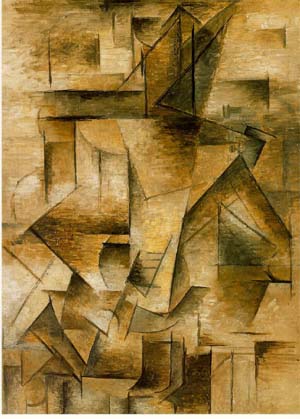 |

|
Cubist Web-Site Design
The logic of the links that connect the pages of a Web site together is different than the logic of pages in an article or chapters in a book.
The logic of links is non-sequential.
With links, a writer/designer
looks at a topic from different, complementary angles, rather than
taking us through an argument or explanation step by step, with each
part built upon the previous part like the floors of a building reaching
to the sky. 
Instead, pages of a Web site are arrayed or deployed, rather than stacked or staged.
This kind of presentation follows the logic of Cubist style of art. Like a Pablo Picasso painting, a Web site gives us lots of angles and "takes" on a topic simultaneously.
In writing, this Cubist style is seen in essays and books that invite us to browse and read non-sequentially.
John Updike, for instance, wrote an article about seeing The Masters golf tournament. Rather than telling the story of his visit to Augusta, he wrote an article called, "Thirteen Ways of Looking at the Masters" (a homage to Wallace Stevens' poem "Thirteen Ways of Looking at a Blackbird), in which he broke the experience of the golf tournament into 13 chunks, with the titles:
- As an event in Augusta , Georgia
- As an Event Not in Augusts, Georgia
- As a Study in Green
- As a Rite of Spring
- As a Fashion Show
- As a Display Case for Sam Snead and Arnold Palmer
- As an Exercise in Spectatorship
- As a Study in Turf Building
- As Demography
- As Race Relations
- As Class Relations
- As a Parade of Lovely Golfers, No Two Alike
- As a Religious Experience.
< Back to the Ideas Site home
Please contact me about any broken links or errors, or if you have suggestions for additional links on this page.